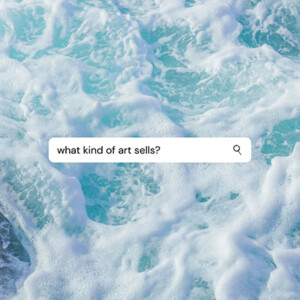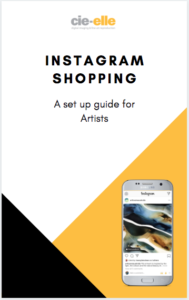Ever googled “what type of art sells most”? There’s actually not a lot of useful content out there. On the other hand, there is a tonne of information on how to sell your art.
Makes sense, since artists generally begin their careers from a place creativity and passion. Then, after some time or interest, decide to start selling their art.
Creativity first, then business.
But what if you thought about things in reverse order?
If you know you want to make some cash, even if just a side hustle, then it will pay dividends to look at buying trends before you step into your studio.
In the marketing world this is called product research. And there’s a reason that big businesses invest in this field.
If you do your research and uncover a need or want that is not being met, then develop a develop a product to meet that need or want, guess what?
Winner, winner chicken dinner.
How does this relate to art?
Marketing is driven by needs and wants.
Why do people buy art? It’s not based on needs, it’s about wants and emotions.
People buy art because it makes them feel a certain way. Or in the words of Marie Kondo, because it sparks joy for them. Of course, a small percentage buy art for investment but let’s stick to the majority here.
So, if you want to sell your art on a larger scale, wouldn’t it be great to know what kind of art, or styles appeal to a lot of people? What do people want?
Why it’s smart to understand the trends and what sells
Firstly, let’s be clear, this doesn’t mean just because a tonne of people like beach scenes or landscape paintings that you need to paint these specifically.
Every artist has their own unique style, so it’s best to stick to what you know and stay true to that uniqueness. Also, art comes from a place of creativity and is a form of expression, so should not be driven by business.
But there is a way to be a smarter about the art you create, if you intend to sell it widely.
For example, to capitalise on a trending style or colours, say for the décor market or interior design industry, you might want to incorporate some of these colours in some of your pieces.
Or, think about using earthy tones or natural shapes, if nature-inspired art has mass appeal. Which according to Bluethumb, this was a big trend in 2019.
This also extends to format not just the initial creation. If you know what sizes of artwork are most in demand, this enables you to create work to cater for this. Or scan your original and develop prints to sell which meet those size requirements.
It’s easy to adapt what you’re already doing to cater for these trends.
Keep in mind though, trends never last and there’s no one size fits all. Like in any industry, it’s wise to keep abreast of trends, changes and what others are doing.
Just make sure you are true to your own unique style. Don’t change your work just to tap into something that’s trending if it’s not what comes naturally to you.
So, what are the recent art trends?
An article by Bluethumb, on Australian art trends for 2019, listed the following as among the most popular styles and mediums (based on their own shopping data):
- Acrylic paint
- Fine art photography
- Classical still life paintings
- Coastal inspired art
- Aboriginal art
According to Saatchi Art’s 2019 trend report, here are some top themes collectors and designers were looking for:
- Wellness
- Metallic tones
- Maximalism
- Nature- inspired art
- Artisanal works
What are the most popular artwork sizes sold?
When in creation mode, it’s easy to focus on what size best fits your vision for the piece.
However, this isn’t always in line with what buyers are after.
It doesn’t matter so much if you’re wanting to keep the original and make prints. You can always print to standard sizes. But, if you’re wanting to sell the original as well, consider what is actually in demand.
Don’t forget, printing to standard sizes also has cost saving benefits when it comes to production of prints as well.
Looking for some hard data?
According to Bluethumb, the most popular sizes based on sales through their site, are:
- 30 x 30 cm
- 100 x 100 cm
- Over 150cm
Decisions, decisions
While it can help to know what the current trends are, your inspiration will naturally come from within. And what’s trending should definitely not sway your creation too much.
But if you’re looking to market your art on a wider scale or to a particular niche audience, you can use trend data to help guide your decisions on the more specific questions.
Like which size might be better for the market you’re trying to sell into.
Or if you’re stuck deciding on a palette or media to use, knowing what’s popular with your audience will inevitably help you appeal to more buyers.
Helpful links:
Top 5 reasons you should reproduce your artwork
Cie-elle fine art reproduction process
Want to do more with Instagram?
Get the step by step guide on how to set up Instagram Shopping, dedicated for artists:

